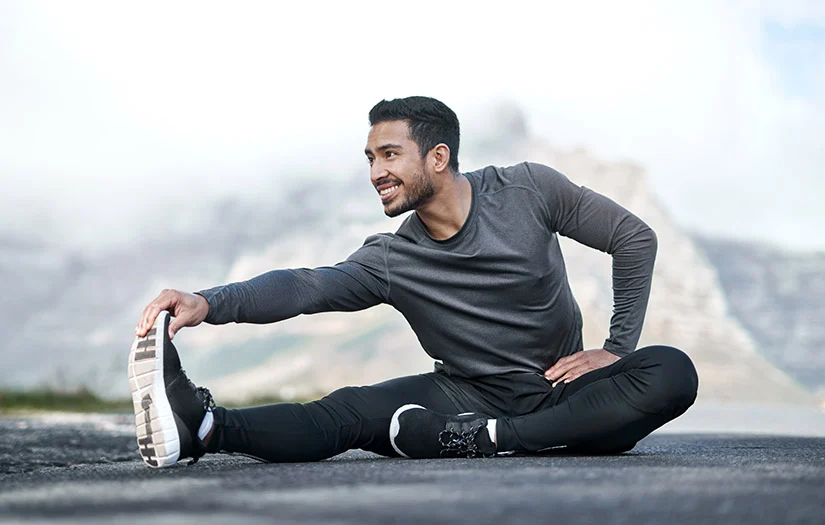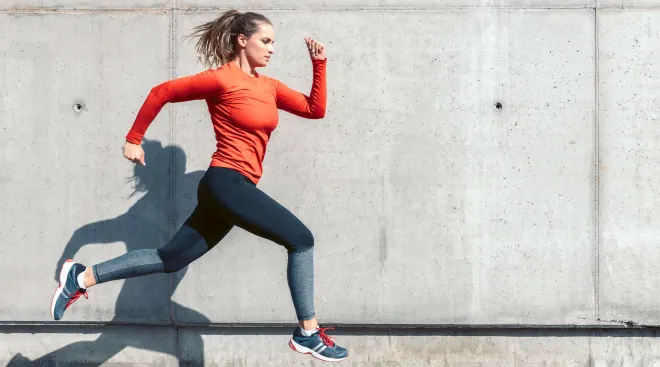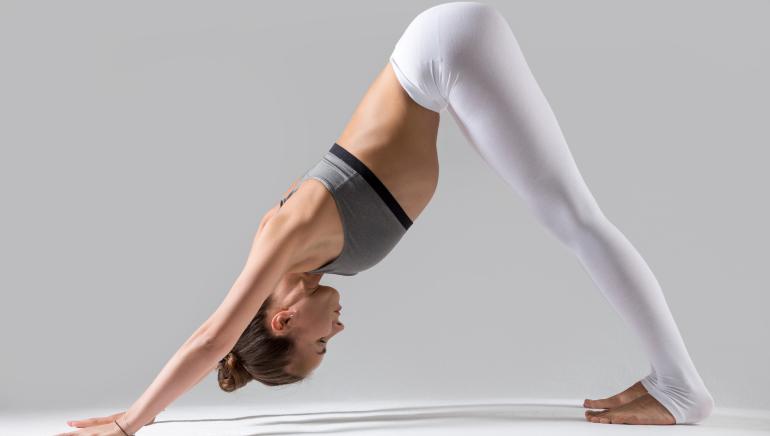
Advantages Of Stretching And Fundamental Exercises
If your body is weary and you enjoy neither HIIT, cardio, or daily weightlifting, stretch! Stretching both before and after an exercise releases your muscles. Like a warm-up, it ready your body for activity. Your blood circulation also gets better and makes you feel lively all day long. You will therefore start to be proactive and perform more daily than you could have in the past.
The advantages of everyday stretching are collected on this page. Go on to have all the knowledge. Sort down!
What Happens When You Stretch?
Stretching not only elongates your muscles but also the fascia, or connective tissue, that envelops them. This eliminates pent-up tension and helps your body move generally more freely.
Stretching accomplishes more than merely increasing flexibility of your body. You should be aware of a lot of advantages it presents. Let us have a look at them!
Eight Ways Stretching Changes Your Life

1. Increases Agility
Stretching helps your body to be more flexible generally and to have greater joint range of action. This increases daily functioning of your body and increases your agility and quickness on your feet.
2. Improves Blood Circulation
Stretching raises blood flow all over your body. This eliminates unnecessary byproducts of muscular tissues and helps any injuries recuperate faster.
3. Improved Body Alignment
Stretching daily helps you to better posture your body. Given the type of tension your muscles go through, body posture is very vital. It guides your development of aches and pains.
4. Enhances Coordination Of The Body
Stretching increases whole body coordination. Your joint range of motion—that is, how far you can stretch out your joints—will also improve when you start daily stretching. It also releases emotional and physical tension and addresses tight muscles.
5. Therapeutic Effect
Mild sadness and emotional tension are supposed to be released therapeutically by stretching.
6. Boosts Endurance
Daily stretching helps you develop endurance, which will enable you to do more in a day. Daily stretching helps you usually feel less weary and more energetic.
7. Gets Body Soreness Relief
Tension in the muscles causes physical pain in the body. By relieving the pain and stiffness, stretching increases your body's activity and alert over time.
8. A Fix for Nightmares
Since the muscles in your body are more relaxed when you stretch, you may find greater sleep.
Blogger Stuart McDonald has experimented with stretching and posted his results. For me, though, stretching is about the experience during and after the stretch and the most conscious approach to live. Not just right away, though, not only the obvious changes. I mean a long-term practice of stretching and the physical modifications it generates. That experience—the ease of mobility, the liberation from some aches, the sensation of contentment in my body—only comes about with a regular practice of stretching paired with focused meditation and strengthening.”
Here are some methods you should use to maximize your stretching and help you avoid injuries.
Methods for Effective Stretching

Breathe Evenly
Stretching requires control of your breathing. Breathe in and out three seconds apiece. This warms your body and releases your muscles, thereby enabling your body to rest.
Warm Up Ahead of Stretching
Warm-up activities help you raise body temperature before you engage in a demanding exercise program. This boosts blood flow to your ligaments, tendons, and muscles, therefore enhancing their elasticity and reducing their likelihood of damage and injury.
Enough to increase your heart rate and release your muscles is a 30-second skip or a short jog. Don't overdo the warmth-up intensity, either.
Moving During Stretching
Light rips in the muscles brought on by bouncing around during stretches develop scar tissue. This scar tissue loses elasticity and hardens over time.
Bouncing while stretching also helps your muscles not entirely release.
Try your best to remain in equilibrium rather than flinging everything about. Initially, use a barre to assist you; then, gradually perform the stretches by yourself. As much as you can, try to remain constant and maintain your equilibrium.
Don't Push too Far
Though many people think you should feel the heat while stretching, be careful not to push it too far. Stretching should help your muscles relax, not shock them into loosening. More flexibility is the aim. Overlong stretches or too hard pushing yourself might aggravate the pain, or worse, lead to an injury.
Stretch Time
Spend at least thirty seconds holding every stretch. With any stretching exercise, this is a sufficient period of time to let your muscles release. You want the muscles to relax so they will contract once again following stretching. Thirty seconds is the ideal length of time to let whatever stress your body has accumulated release itself.
See A Doctor. Check In.
See a physical therapist to find out the regions you should focus on and to acquire particular exercises to target them before you start regular stretching. Before you begin stretching, you might be prudent to see a physical therapist if you have any bodily pains.
Stretch First Thing in the Morning
By increasing your body's agility, stretching helps you to be more efficient in completing daily tasks than you would otherwise be able. Maybe begin your day with some basic stretches. It not only awakens your body but also defines the tone of the whole day.
Work Both sides equally
To release tension and improve flexibility all over your body, you must do each exercise on both sides for the same length of time or number of repetitions. Inappropriate stretching on one side runs the danger of causing damage.
Before And After An Exercise Session

Both before and after an exercise helps the body remain flexible by means of stretching. This will make sure your body isn't overworked and allows it time to progressively cool off following exercise.
Here are some stretching exercises meant to assist release your muscles and enhance your everyday functioning.
Knowing the technicalities of stretching prepares you to include it into your program without difficulty. Now, consider the pragmatic side and pick up some stretching technique starting point knowledge.
How To Create A Routine Of Stretching
-
Tell us, for example, why you wish to stretch—for relaxation or flexibility.
-
Start with simple stretches to gently warm your muscles.
-
Stretching your neck, shoulders, back, hips, and legs will help
-
Hold every stretch for 15 to 30 seconds; try not to bounce.
-
Before the stretch, inhale; then, as you ease into it, exhale.
-
Make stretching a regular habit; do it minimum two to three times a week.
-
Try not to push too hard; discomfort is normal but agony is not.
-
Start with including some light exercise stretches.
-
Finish with gently relaxing stretches.
-
Hydrate both before and after stretching.
Basic Stretching Exercises
1. Downward Dog

One standing yoga practice meant to increase whole body strength is the Downward Dog. It works your whole body by stretching out your shoulders, arches, hamstrings, hands, calves, and spine. It helps with headaches, sleeplessness, and tiredness. Blood rushes to your brain and relaxes the nervous system in this simple inversion stretch, therefore enhancing memory and reducing stress.
Should you have vertigo, carpal tunnel syndrome, or be in the latter term of pregnancy, avoid the Downward Dog exercise. This stretch can worsen back, shoulder, or arm injuries as well as high blood pressure.
How To Get Started
-
Down on your hands and knees, ensure your palms face down and your wrists align with your shoulders. Line your knees with your hips.
-
Rising your pelvis, slowly lift your knees off the floor. As you work, breathe consistently. Straightening your knees will help.
-
Outward stretch your arms such that your hands are firmly on the ground. Don't bend your elbows. Right now, your body forms an inverted "V."
-
Keeping your hands and feet in place all through, push on the ground.
-
Spend between sixteen and twenty seconds in this posture.
-
Breathe as you straight back on the ground bending your knees and elbows.
-
Sets and reps here.
Beginner
- one set including four repetitions.
Modern
- Two sets consisting of ten repetitions
2. Side Bending
Side bends release strain from your rib muscles, diaphragm, and intercostal muscles between each rib. This enables your ribs to achieve their maximum range of motion, therefore providing simple leeway for the lungs to contract and expand.
Methods Of Doing It
-
Arange your feet such that they line your hips. Straighten your arms out to the sides.
-
Exhale and raise your right hand over your head, then bring it to the left side. Bend your waist toward the left as well as you go through this. Reach the left leg with your left hand sliding down.
-
Spend around five seconds in the posture.
-
Inhale then go back to the beginning point. Proceed the same on the opposite side.
-
Completing 15 repetitions on both sides, this stretch counts 30 repetitions overall.
-
You may also do these side bends while seated.
-
Set and repetitions
Beginner
- One set of five repetitions apiece
Advanced
- Two sets with fifteen repetitions apiece
3. Spinal Twist from Sitting
The sitting spinal twist releases the back muscles, therefore enhancing spinal flexibility. This exercise helps digestion and releases backache, sciatica, and menstruation pain. It increases your organs' blood flow as well.
This exercise should not be tried if you have lower back or knee issues.
How To Go About It
-
Keeping your back straight, sit with your legs extended out before of you.
-
Bending at the knee, slide your right leg towards you. Lift it and position it over the other side of your left leg.
-
Head facing behind, twist your waist toward the right side.
-
With your elbow bent and hand facing skyward, stretch your left hand over the right knee.
-
Keep your right hand firmly on the floor behind your back.
-
Set and repetitions
Beginner
- One set of five repetitions on each side.
Advanced
- Three sets of five on each sides
Read Also: Yoga Mudras To Get Rid Of Any Illness
4. Extended Poses for Children

Stretching the upper body, the Extended Child's Pose targets your back and shoulders. While keeping your knees together provides the torso stability and helps with back problems, keeping them apart stretches the internal organs.
How To Get Started
-
Slink down with your knees under you.
-
Stretching your arms out with your palms, bend forward to touch the ground.
-
Maintaining straight arms, extend your back.
-
Spend around thirty seconds in the stance before going back to the beginning point.
-
Sets and Rep Count
Beginner
- one set of five repetitions
Advanced
- Three sets five times.
5. Stretch for Lower Back
These stretches of the muscles in the lower back help to alleviate discomfort there. They also elongate the related muscles and tissues and tone the glutes.
Knees to Chest
Methods Of Doing It
-
Sit on your back.
-
Using your arms, bring your knees up to your chest and keep them there.
-
Maintaining ground, keep your head and neck low and avoid raising them.
-
Try this for thirty seconds.
-
Sets and Rep Count
Beginner
- one set including four repetitions.
Advanced
- Two sets ten times each


